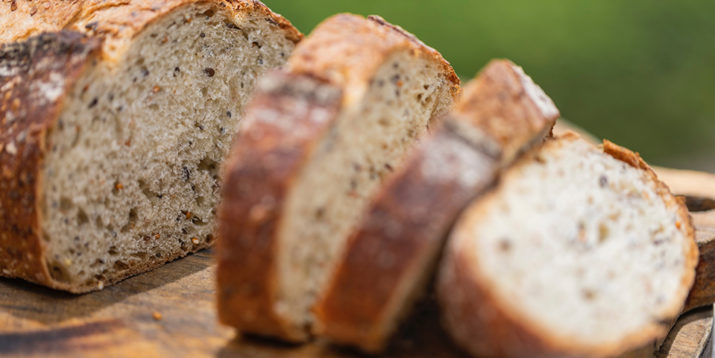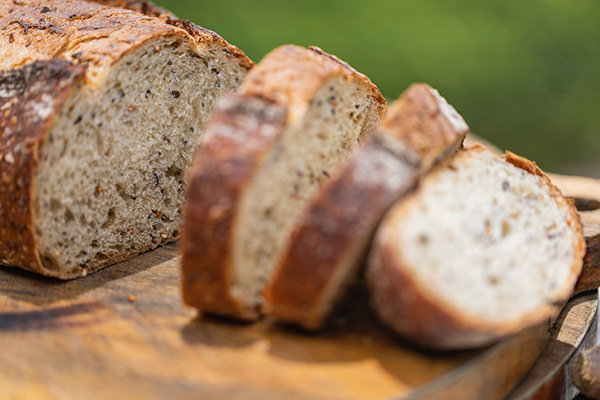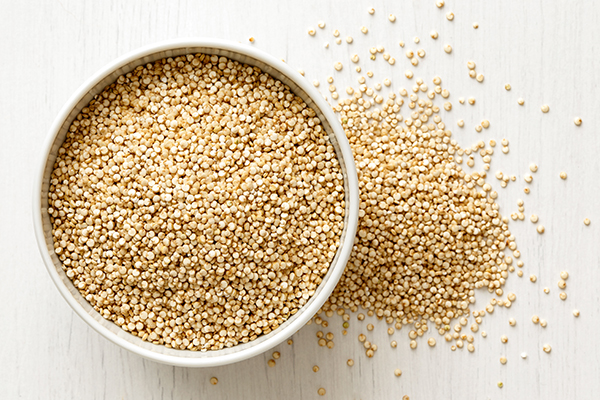Whole Wheat vs. Whole Grain — What’s the Difference?

Whole wheat, whole grain, multigrain, 12 grain, gluten-free, grain-free. These days, choosing a healthy bread is far more complicated than it once was.
Remember when the choice was as simple as “white or wheat”?
But fear not — with a little help from the experts, you can walk down the bread aisle (or shop for pasta and crackers) free of anxiety and confidently pick out the best option for you.
Here’s all you need to know about picking a winner in the battle of whole wheat vs. whole grain.
Whole Wheat vs. Whole Grain: What You Should Know

Whole wheat is a whole grain, but “not all whole grains are whole wheat,” says Krista Maguire, RD, CSSD, senior nutrition manager at BODi. “In fact, some whole grains contain no wheat at all.”
Say what?
That’s perhaps the most confusing thing about these terms. Here’s how it works: Whole grains contain all three edible parts of the grain: the outer bran, the germ, and the endosperm.
On the other hand, refined or processed grains lack at least one of these layers — and therefore nutrients.
- The bran provides fiber, antioxidants, and B vitamins.
- The germ also contains B vitamins as well as alpha-linolenic acid (an omega-3 fatty acid), and some minerals.
- The endosperm is predominantly starchy carbs. It’s also the part used to make refined white flour.
Some common whole grains include:
- amaranth
- barley
- buckwheat
- corn
- farro
- oats
- quinoa
- wild rice
- wheat
While some of these grains end up processed before you find them on supermarket shelves, they start out life as whole grains.
Now that you know what whole grains are, you can probably guess what whole wheat is.
“‘One-hundred percent whole wheat’ means the bran and germ of the wheat grain are left intact, which increases the fiber and nutrient contents of the grain,” explains Cynthia Sass, MPH, RD, a nutritionist who runs a private practice specializing in plant-based diets and performance.

What Does “Multigrain” Mean?
Another similar-sounding term found in the bread and cracker aisles is “multigrain.” This simply means that the product contains more than one grain.
“It doesn’t mean that those grains are whole,” Maguire says. “Some may be whole, but some may be refined, so it’s best to check the ingredients.”
Whole Wheat vs. Whole Grain: Which Is Healthier?
When you’re standing in the supermarket trying to decide on whole-wheat vs. whole-grain bread, know this: Both whole-wheat and whole-grain breads and pastas are healthy options.
“It depends on if you have any type of wheat sensitivity or allergy and what you are looking to gain from the grains you consume,” Maguire explains. “Some grains are higher in protein than others, some have more fiber, and some may be higher in certain vitamins or minerals.”
Think of it this way, Sass says: Just as broccoli is only one type of vegetable — and every veggie has different nutrients and therefore different health benefits — whole wheat is only one type of whole grain.
Each whole grain, from amaranth to einkorn, has its own pros and cons. Even still, they may help you live longer.
But whichever whole-grain product you choose, you can feel good knowing that, as long as it’s 100% whole grain and you are OK consuming those grains, it’s healthy for you.
“All whole grains are healthier than refined grains and, for the most part, enriched grains,” Maguire says.
Whole Wheat vs. Whole Grain: How to Choose the Best for You
Next time you’re trying to choose between, say, whole-grain vs. whole-wheat pasta, the first step is to look for products that say they’re made with 100% whole grains (or whole wheat).
Without this label or stamp, the product might combine a whole grain and a refined grain, such as a bread made with both white flour and whole-wheat flour, Sass explains.
That rule applies to any products containing grains, such as whole-wheat graham crackers for pie crust.
Then look at the ingredients list.
“A bread’s ingredients should read like a recipe you could have made yourself,” Sass says, so look for ingredients you recognize. When it comes to the grains, be sure they say “whole” before the name of the grain.
These whole grains should be listed as the first ingredient (or ingredients if the product contains multiple whole grains), Maguire says.
Lastly, if the ingredients list passes snuff, look at the nutrition facts. For bread, Maguire recommends aiming for about 80 to 100 calories, 3 to 4 grams of fiber, and little or no added sugars per slice.
What If I Can’t Eat Wheat?
Anyone who has celiac disease or is intolerant to gluten can still consume some whole grains since not all whole grains contain gluten.
Sass shares a long list of options: amaranth, buckwheat (which isn’t actually a type of wheat), corn, millet, quinoa, rice, sorghum, and teff. Oats are naturally gluten-free, too, as long as they haven’t been cross-contaminated during processing.
Look for 100% whole-grain gluten-free breads with the word “whole” before these ingredients.
